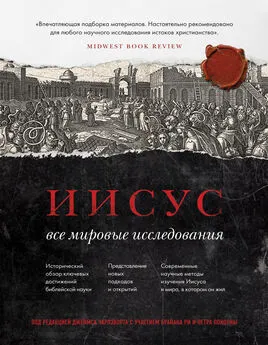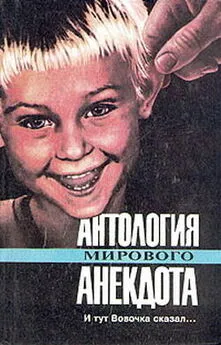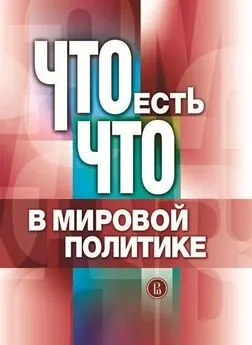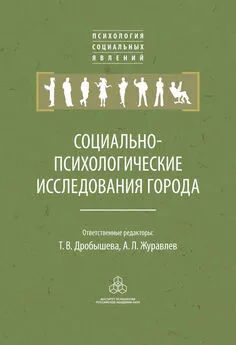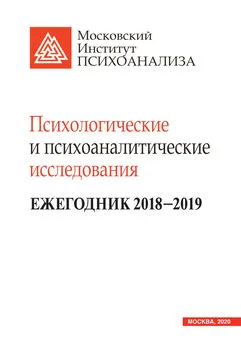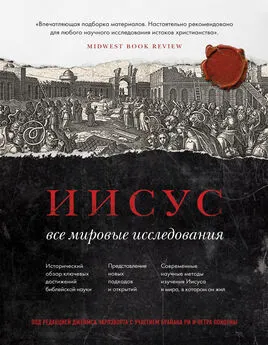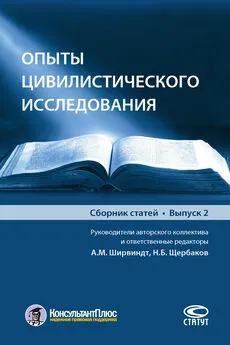Коллектив авторов - Иисус. Все мировые исследования
- Название:Иисус. Все мировые исследования
- Автор:
- Жанр:
- Издательство:Эксмо
- Год:2021
- Город:Москва
- ISBN:978-5-04-155616-7
- Рейтинг:
- Избранное:Добавить в избранное
-
Отзывы:
-
Ваша оценка:
Коллектив авторов - Иисус. Все мировые исследования краткое содержание
Иисус. Все мировые исследования - читать онлайн бесплатно ознакомительный отрывок
Интервал:
Закладка:
164
Об историзме см.: D. Bebbington, Patterns in History: A Christian View (Downers Grove, Ill.: InterVarsity Press, 1979), с. 92–116, особ. с. 92–94; ср. также: D. Banks, Writing the History of Israel (LHB/OTS 438; London: T&T Clark, 2006), ch. 2.
165
Историзм напрямую связан с лингвистическим релятивизмом, о чем говорили такие мыслители, как Гумбольдт; см.: W. von Humboldt, On Language: On the Diversity of Human Language Construction and Its Influence on the Mental Development of the Human Species (ed. M. Losonsky; trans. P. Heath; Cambridge: Cambridge University Press, 1999), а также вступление Кристофера Хаттона к немецкому оригиналу: W. von Humboldt, Über die Verschiedenheit des menschlichen Sprachbaues (repr., London: Routledge, 1995), c. v – xii. Кроме того, вопрос языка и культуры можно усмотреть за подъемом национал-социализма в Германии в XX веке.
166
См.: A. Schweitzer, The Quest of the Historical Jesus: A Critical Study of Its Progress from Reimarus to Wrede (trans. W. Montgomery; New York: Macmillan, 1910; orig. 1906), с. 270–293, где прослеживается это развитие. Ср.: S. E. Porter, «A Dead End or a New Beginning? Examining Criteria for Authenticity in Historical Jesus Research in Light of Albert Schweitzer», в кн.: Jesus Research: An International Perspective (ed. J. H. Charlesworth and P. Pokorný; Grand Rapids: Eerdmans, 2009), с. 16–35.
167
См.: D. H. Fischer, Historians’ Fallacies: Toward a Logic of Historical Thought (New York: Harper & Row, 1970), с. 9–12.
168
G. Theissen and D. Winter, The Quest for the Plausible Jesus: The Question of Criteria (trans. M. E. Boring; Louisville: Westminster John Knox, 2002), с. 261–316.
169
S. McKnight, Jesus and His Death: Historiography, the Historical Jesus, and Atonement Theory (Waco, Tex.: Baylor University Press, 2005), с. 42–43.
170
J. D. G. Dunn, Jesus Remembered (CM 1; Grand Rapids: Eerdmans, 2003), с. 82, где цитируются, помимо прочих, и упомянутые авторы.
171
См.: N. Perrin, What Is Redaction Criticism? (GBS; Philadelphia: Fortress; 1970), с. 71; idem, Rediscovering the Teaching of Jesus (New York: Harper & Row, 1967), с. 39–43, 45–57. Брюс Чилтон указал на то, что критерий несходства, по мнению Перрина, помогает нам воссоздать историю преданий об Иисусе (см.: Perrin, Rediscovering the Teaching of Jesus, с. 15–49). Возникает законный вопрос: была ли проведена такая реконструкция и насколько она завершена? Я призываю обратить на него внимание, выбрав для решения непроторенные пути.
172
D. G. A. Calvert, «An Examination of the Criteria for Distinguishing the Authentic Words of Jesus», NTS 18 (1971–1972): 209–219; R. H. Stein, «The ‘Criteria’ for Authenticity», в кн.: Studies of History and Tradition in the Four Gospels (ed. R. T. France and D. Wenham; Gospel Perspectives 1; Sheffield: JSOT Press, 1980), с. 225–263; C. A. Evans, «Authenticity Criteria in Life of Jesus Research», CSR 19 (1989): 6–31; idem, Life of Jesus Research: An Annotated Bibliography (rev. ed.; NTTS 24; Leiden: Brill, 1996), с. 127–146; idem, Jesus and His Contemporaries: Comparative Studies (AGJU 25; Leiden: Brill, 1995), с. 13–26; J. P. Meier, A Marginal Jew: Rethinking the Historical Jesus (4 vols. to date; ABRL; New York: Doubleday, 1991–2009), 1:167–195.
173
См.: Meier, Marginal Jew, 1:178–183.
174
См. также: E. Schillebeeckx, Jesus: An Experiment in Christology (trans. H. Hoskins; New York: Seabury, 1979), с. 88–100.
175
Meier, Marginal Jew, 1:168–177, 178–183.
176
Theissen and Winter, Quest for a Plausible Jesus, с. 172–211. Оценку их труда см. в издании: Porter, Criteria for Authenticity, с. 113–122; а также ниже в данной книге.
177
Porter, Criteria for Authenticity, с. 126–237; ср.: idem, «The Criterion of Greek Language and Its Context: A Further Response», JSHJ 4.1 (2006): 69–74.
178
Dunn, Jesus Remembered, с. 83.
179
История изучения вопроса о том, владел ли Иисус греческим, явно приводит нас к выводу, что он знал этот язык. Это подтверждают исследования последних лет. См., напр.: M. J. McClymond, Familiar Stranger: An Introduction to Jesus of Nazareth (Grand Rapids: Eerdmans, 2004), с. 51–52.
180
См.: B. F. Meyer, Critical Realism and the New Testament (Allison Park, Pa.: Pickwick, 1989); N. T. Wright, The New Testament and the People of God ( COQG 1; Minneapolis: Fortress, 1992), с. 32–46; J. D. G. Dunn, Jesus Remembered, с. 110–111; McKnight, Jesus and His Death, с. 20–21.
181
McKnight, Jesus and His Death, с. 20.
182
M. Grant, Jesus: An Historian’s Review of the Gospels (New York: Scribner, 1977), с. 201–203.
183
При написании данного раздела я многим обязан источнику: Bebbington, Patterns, с. 1–20.
184
B. W. Jones and R. D. Milns, The Use of Documentary Evidence in the Study of Roman Imperial History (Sydney: Sydney University Press, 1984), c. xi.
185
C. P. T. Naudé, «An Aspect of Early Roman Historiography», Acta Classica 4 (1960): 53–64, особ. с. 54.
186
Fischer, Historians’ Fallacies, с. 4. См. также критику «зонтичной гипотезы» в работе: W. Dray, Laws and Explanation in History (Oxford: Oxford University Press, 1957).
187
См.: Banks, Writing the History of Israel, с. 205–218. Сказанное можно проиллюстрировать с помощью такого примера. Джеймс Чарлзворт относит «чудеса исцелений» Иисуса «в прямом смысле к bruta facta », иными словами, к необъяснимым деяниям Иисуса. Это заключение, на первый взгляд максималистское, основано на том, что все доступные нам источники единодушно говорят о таких исцелениях. В то же время некоторые исследователи, изучая источники, «предполагают, что какие-то их элементы “неизбежно” были придуманы» или же априори предполагают, что «события некоторого рода не могли произойти, особенно те, которые касаются чудес». Это минималистский вывод. См.: J. H. Charlesworth, «The Historical Jesus and Exegetical Theology», PSB 22 (2001): 45–63, особ. 49, 56–57; R. Wallace and W. Williams, The Acts of the Apostles: A Companion (London: Bristol Classics, 1993), с. 28.
188
R. Harris, The Linguistics of History (Edinburgh: Edinburgh University Press, 2004), с. 3–6.
189
См.: McKnight, Jesus and His Death, с. 20; Dunn, Jesus Remembered, с. 102–104.
190
См.: Harris, Linguistics of History , особ. с. 1–33. Книга Харриса – это содержательное исследование лингвистических проблем, связанных с созданием исторического нарратива, и аргументированное обоснование авторского подхода, названного интеграционистским. См. также: R. Harris, Introduction to Integrational Linguistics (Oxford: Pergamon, 1998).
191
Harris, Linguistics of History, с. 170.
192
См.: Porter, Criteria for Authenticity, с. 70–76.
193
Существует стандартное разделение поиска на три периода, но, хотя оно пользуется широкой популярностью, я полагаю, что оно неудачно описывает развитие поиска исторического Иисуса, о чем я еще расскажу в заключении. См.: Porter, Criteria for Authenticity, с. 28–62; W. P. Weaver, The Historical Jesus in the Twentieth Century, 1900–1950 (Harrisburg: Trinity Press International, 1999).
194
R. Bultmann, History of the Synoptic Tradition (trans. J. Marsh; 2 nded.; Oxford: Blackwell, 1968), с. 205.
195
E. Käsemann, «The Problem of the Historical Jesus», в кн.: Essays on New Testament Themes (trans. W. J. Montague; SBT 1/41; London: SCM, 1964), с. 15–47, особ. с. 37.
196
Fischer, Historians’ Fallacies, с. 8, 34. Николас Томас Райт вводит критерий двойного правдоподобия, это попытка сделать шаг в противоположном направлении; см.: N. T. Wright, Jesus and the Victory of God ( COQG 2; Minneapolis: Fortress, 1996), с. 131–133.
197
См.: Porter, Criteria for Authenticity, с. 79.
198
Общеизвестно, что трое основоположников расходились во мнениях, но результаты их трудов привели к возникновению критики форм. См.: K. L. Schmidt, Der Rahmen der Geschichte Jesu: Literarkritische Untersuchungen zur ältesten Jesusüberlieferung (Berlin: Trowitzsch, 1919); idem, «Formgeschichte», RGG (2 nded.), 2:638–640; M. Dibelius, From Tradition to Gospel (trans. B. L. Woolf; London: Nicholson &Watson, 1934 [оригинал: 1919; 2-е изд.: 1933, издания по-прежнему выходят в печати]); Bultmann, History of the Synoptic Tradition.
Читать дальшеИнтервал:
Закладка:
